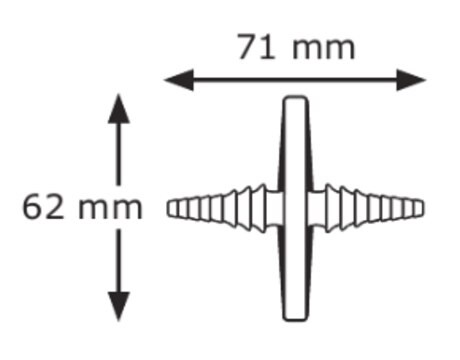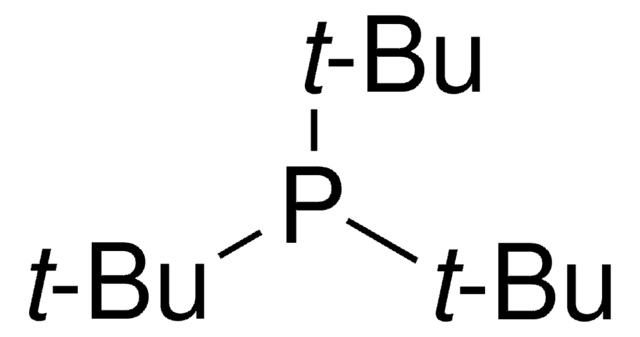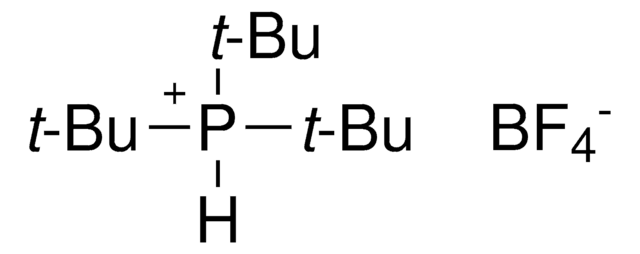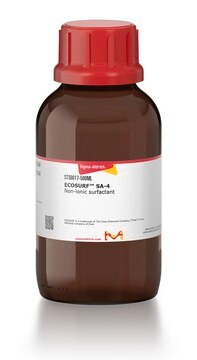CIB002
Cell-in-a-Box® Decapsulation Solution
About This Item
Produits recommandés
Forme
liquid
Conditions d'expédition
ambient
Température de stockage
room temp
Description générale
The Cell-in-a-Box® Decapsulation Solution is a cell-friendly reagent that gently dissolves the membrane of porous bead capsules generated with the CIB001 kit, allowing the user to recover and harvest the encapsulated cells for further downstream analysis and processing, such as cell counting, DNA extraction, and fluorescence imaging.
Application
2. Take 800 ul of Decapsulation Solution (10X) and add it into the well, in order to make a 1X working solution.
3. Place the plate on a horizontal shaker under gentle shaking for 15-30 minutes. Observe regularly with the naked eye or under the microscope to determine when the decapsulation process is sufficiently completed
4. Pipette all the contents into a 15 ml centrifuge tube and centrifuge at 200-300g for 5 minutes.
5. Discard the supernatant and resuspend the cell pellet with 8ml fresh medium or PBS.
6. Repeat step 4.
7. Remove the supernatant and resuspend in an appropriate volume of cell culture medium or PBS for specific downstream application.
Notes:
The Decapsulation Solution has been optimized for the decapsulation of capsules as described in the procedure above. Should there be a need to deviate from it, the procedure will need to be re-optimized at the users own discretion. As a general rule, the ratio of 10 capsules to 8 ml of 1X Decapsulation Solution should be maintained. Increasing the number of capsules used might lead to incomplete decapsulation, while increasing the concentration of Decapsulation Solution might cause some loss of cell viability.
Autres remarques
- Capsules did not dissolve or takes a lot longer than expected to dissolve. Decapsulation Solution concentration in the media can be gradually increased to 2X, while the agitation speed can also be raised.
- Decapsulated cell viability is lower than encapsulated. While the Decapsulation Solution has been tested on multiple cell types and found to have no noticeable cytotoxic effects at the given concentration, it is possible that certain cell lines might be particularly more sensitive. In such a scenario, the best action is to reduce exposure time to Decapsulation Solution as much as possible by monitoring the process closely and removing the solution as soon as decapsulation is complete. If necessary, Decapsulation Solution concentration can be increased with discretion to 2X in order to reduce the time required for decapsulation.
- Decapsulated cell clusters do not separate into individual cells. Cells growing within the environment of the capsule often form 3D aggregates that do not dissociate easily. Depending on the downstream application and cell type, the user might wish to consider treatment with cell dissociating treatments such as Trypsin, EDTA and Accutase reagents.
Informations légales
Code de la classe de stockage
10 - Combustible liquids
Classe de danger pour l'eau (WGK)
WGK 2
Point d'éclair (°F)
Not applicable
Point d'éclair (°C)
Not applicable
Faites votre choix parmi les versions les plus récentes :
Certificats d'analyse (COA)
It looks like we've run into a problem, but you can still download Certificates of Analysis from our Documents section.
Si vous avez besoin d'assistance, veuillez contacter Service Clients
Déjà en possession de ce produit ?
Retrouvez la documentation relative aux produits que vous avez récemment achetés dans la Bibliothèque de documents.
Articles
Cell-in-a-Box® technology allows cell encapsulation using biocompatible semipermeable cellulose nanoparticles for cellular therapy and 3D cell culture applications.
Notre équipe de scientifiques dispose d'une expérience dans tous les secteurs de la recherche, notamment en sciences de la vie, science des matériaux, synthèse chimique, chromatographie, analyse et dans de nombreux autres domaines..
Contacter notre Service technique






